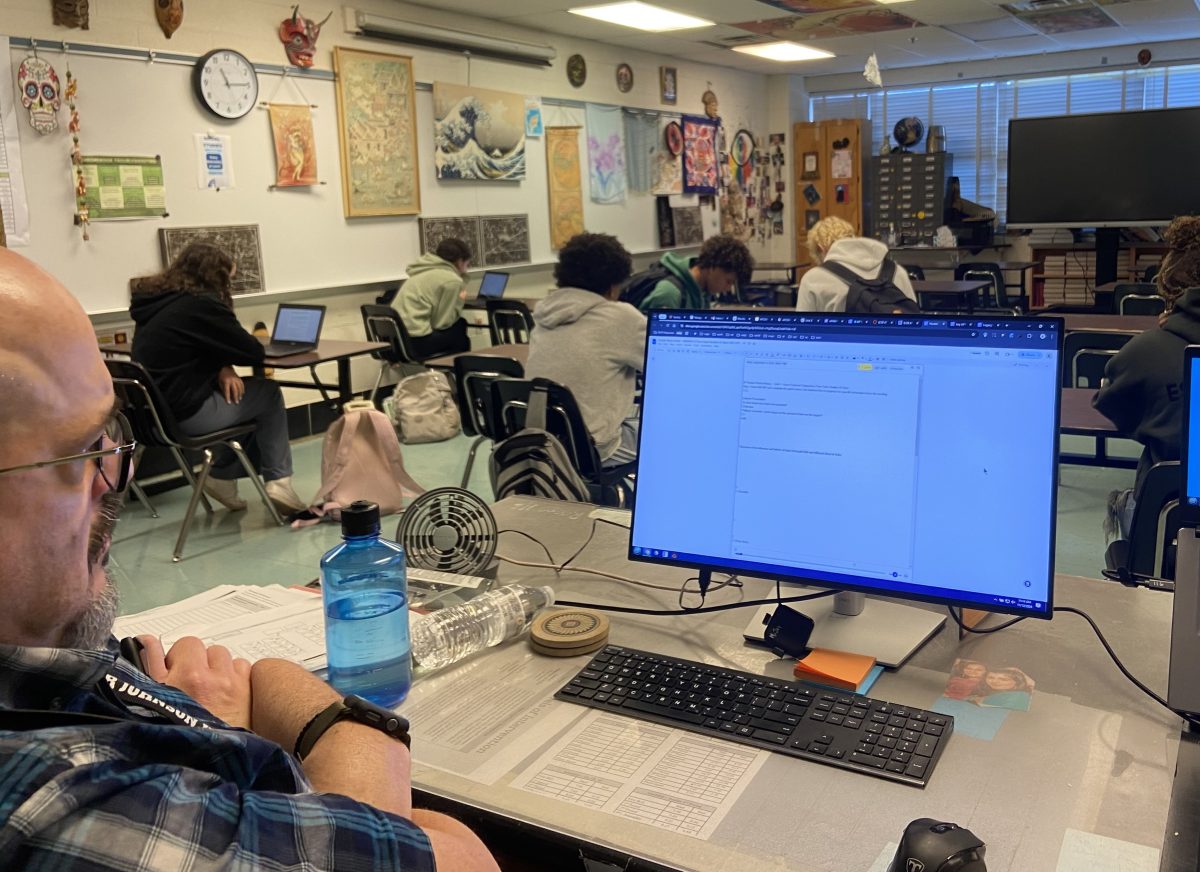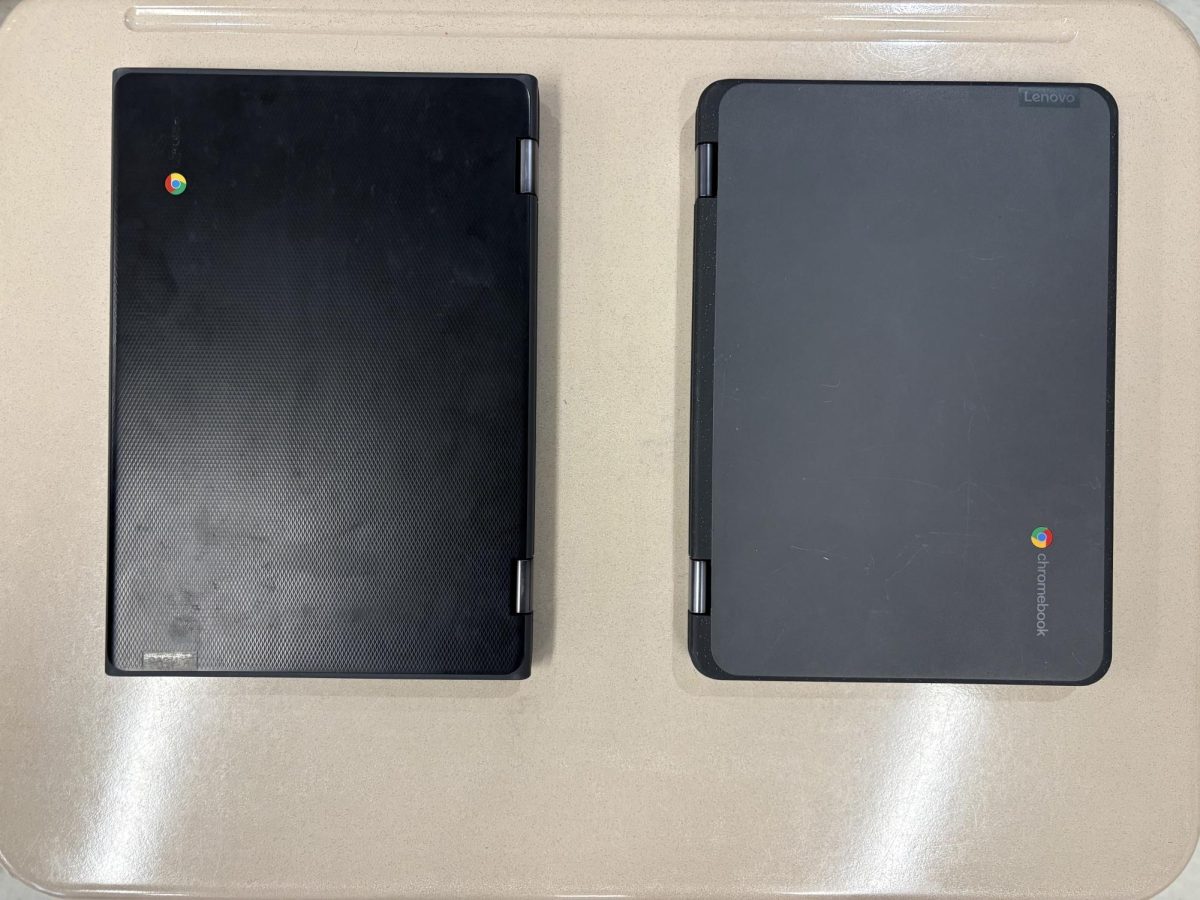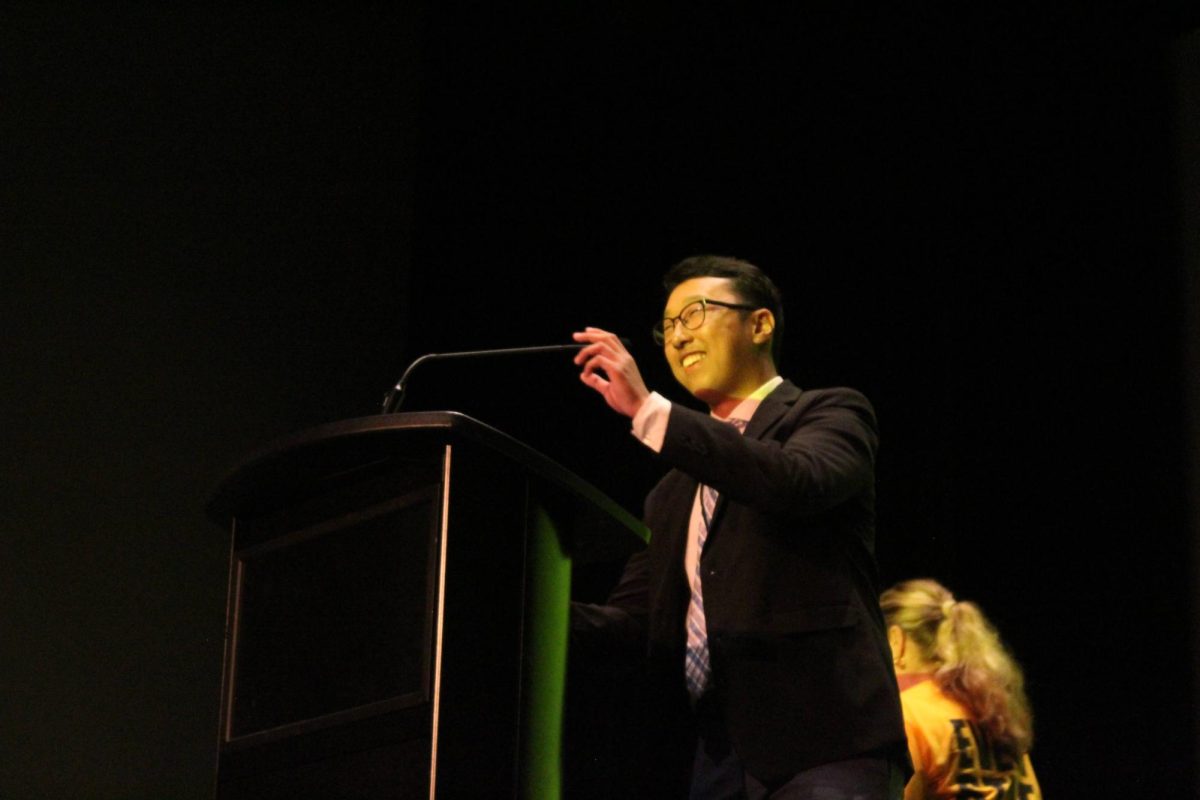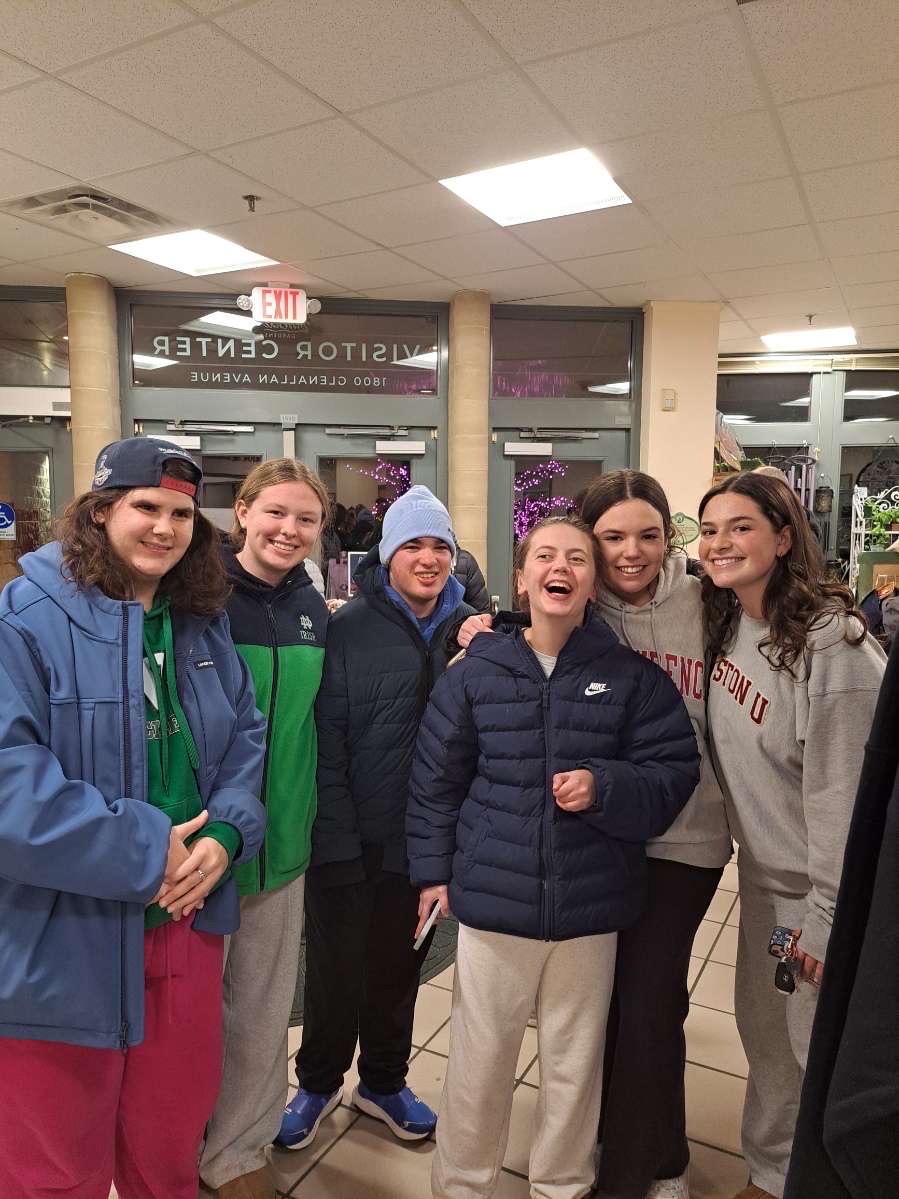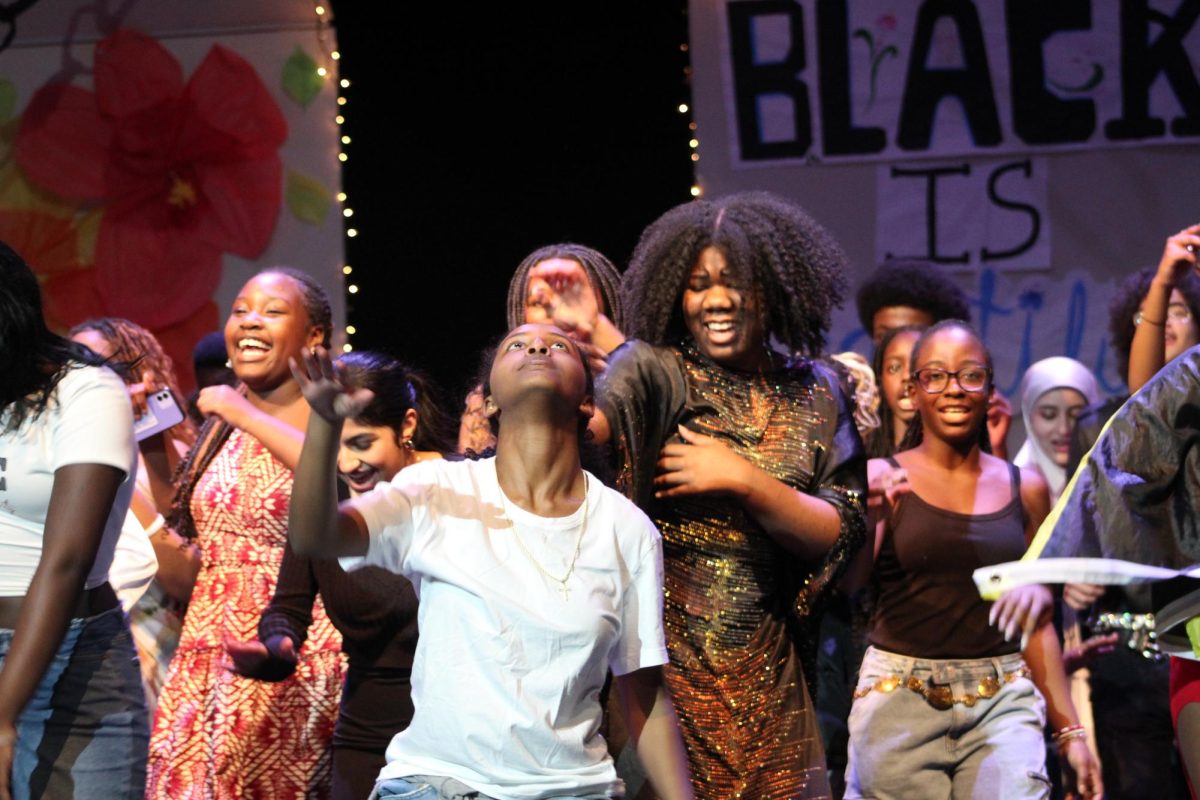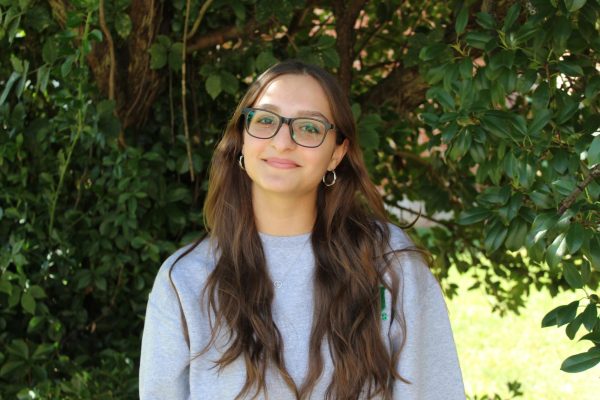Teachers participated in training for two new academic integrity applications, Google LTI and Brisk Teaching, on Oct. 18. With AI becoming increasingly apparent in the education system it is clear that new tools are necessary to combat student usage of AI and other cheating tools. These initiatives for fighting academic dishonesty are not introduced by the Board of Education or Montgomery County, but instead, promoted and implemented by WJ.
Social studies teacher Mitchell Joy along with English teacher Ashley Herdman trained teachers to use the two differing platforms that identify cheating more efficiently.
“For that Staff Development [day], there were three different tracks teachers could take and one of them was [for] AI and the focus there was how to leverage it as a teacher,” Joy said. “I ran a session on academic integrity and I was showing teachers how to use Google LTI which allows them to see what kids are lifting from different sources and also Brisk, which is another program that we use to see large pastes into student work.”
Google LTI identifies if student work is plagiarized from other students, even if teachers do not teach both students. If the assignment is the same, teachers can compare and check if one student’s work matches another student’s work side-by-side.
“I feel like using all of these tools is going to be useful for finding people who are directly plagiarizing,” social studies teacher Katherine Simmons said.
On the other hand, Brisk is more AI-focused and provides teachers with a deeper analysis of student work, by quickly identifying large copy and pastes along with other features.
“If you create a Google Doc [for students to work on], it will let you see in real-time how the document is being typed so you can see when someone cut and pasted versus if they typed,” Simmons said. “It [also] gives you the time lapsed so that you know if something should take 45 minutes to write and it takes a student four minutes, then that’s a red flag that someone is pulling something from the Internet or AI and using it.”
Even though teachers were trained on how to use the new technologies, there are different levels of comfort with it across and within departments. Moreover, the systems do have limitations and should be checked and used with caution by teachers.
“It adds an extra time component to grading something and looking at how many people are matches and how much of it is a match and you still have to dig through the weeds to figure out [if] someone just directly plagiarized or are they just pulling quotes from DBQ [documents]?” Simmons said.
For some departments, particularly those that emphasize written work, these systems play a bigger role in grading while for others, Brisk and Google LTI are rarely used. For departments such as Math and certain electives, the concern with AI is not about direct plagiarism but unethical usage in quizzes and tests.
“If it’s used for the purpose of learning, [then that’s okay with me] but if it’s used to get a completion grade or figure out how to do a question that someone told you was on the test and then you just memorize it, I feel like it’s not helpful,” math teacher Staci Gallun said.
With more and more AP exams becoming digitized, assignments that used to be completed with paper and pencil are now being moved online, further increasing AI usage and teacher concern.
“I think [the Social Studies department sees more students using AI] than other departments because we ask students all the time to read material and make meaning out of it in some way and a lot of that is writing, so I think we’re highly concerned maybe more so than math and other areas,” Simmons said.
The goal of these systems is not to punish students, but instead encourage them to act with academic integrity even with the ease of AI, as well as to prepare students for their futures where AI has a no-tolerance policy.
“The goal is to try to encourage kids to show their integrity in an academic way because if they go to college and they’re caught, they’re going to be expelled,” Joy said.
However, some feel that the added systems create a barrier between teachers and students because of the automatic suspicion of academic dishonesty by students.
“I want to believe the best of my students. I would be completely naive to think that no one ever used ChatGPT [and] kids copy all the time,” Simmons said. “But, I want to believe the best of my students and I feel like [Brisk and Google LTI] somehow mentally create some sort of distrust [and] you go in assuming that everyone is doing this when not everyone is.”
With Brisk and Google LTI now being a part of teachers’ grading process, rates of AI usage and direct plagiarism will hopefully decrease.
“You can’t really fully fight [AI], it’s mostly being more knowledgeable about it and being able to use it for your benefit as a teacher and knowing that kids use it all the time,” Joy said. “If [AI] is thinking for you, then what are you doing?”



